Overfishing poses a critical threat to marine ecosystems and the livelihoods of millions who depend on fishing. It depletes fish stocks, disrupts food chains, and causes significant ecological imbalances. Governments, scientists, and conservationists worldwide are working tirelessly to address this issue. Among the tools employed to combat overfishing, fish tagging systems have emerged as a game-changing technology. These systems not only help monitor fish populations but also provide vital data to inform sustainable fishing practices and enforce regulations.
In this article, we’ll explore how fish tagging systems contribute to combating overfishing and why they are a cornerstone in modern marine conservation efforts.
Understanding Overfishing and Its Consequences
Before diving into the role of fish tagging, it’s essential to grasp the scale of the overfishing problem. Overfishing occurs when fish are caught at a rate faster than they can reproduce, leading to a decline in fish stocks. This unsustainable practice is driven by factors such as increased global demand for seafood, illegal fishing activities, and insufficient regulation.
The consequences of overfishing are far-reaching:
- Ecosystem Disruption: Overfishing alters marine ecosystems by depleting predator or prey species, leading to cascading effects on the food web.
- Economic Losses: Communities that rely on fishing face economic hardships as fish stocks dwindle.
- Biodiversity Loss: The decline of fish populations reduces marine biodiversity, threatening the survival of other marine species.
These challenges highlight the urgent need for effective monitoring and management systems, and this is where fish tagging comes into play.
How Fish Tagging Tools Work
Fish tagging systems involve attaching physical or electronic tags to individual fish to track their movements, behavior, and population dynamics. The data collected through these systems provide invaluable insights into fish life cycles, habitats, and migration patterns. Modern fish tagging ranges from basic physical tags to sophisticated electronic devices like acoustic and satellite tags, enabling researchers to collect real-time data.
The Role of Fish Tagging Systems in Combating Overfishing
Monitoring Fish Populations
One of the primary functions of fish tagging systems is to monitor fish populations accurately. By tagging a sample of fish within a species, scientists can estimate population size, growth rates, and reproductive success. This data helps identify overfished stocks and provides a scientific basis for setting sustainable catch limits.
For example, tagging systems have been instrumental in monitoring species like tuna, which are highly migratory and difficult to track through traditional methods. By understanding the size and health of fish populations, policymakers can implement measures to prevent overfishing and promote recovery.
Tracking Migration Patterns
Many fish species, such as salmon and sharks, migrate over vast distances to feed, reproduce, or spawn. Tagging systems allow researchers to track these migrations in detail, revealing critical habitats and migratory routes that need protection. Protecting these areas, often called marine corridors, ensures that fish populations can complete their life cycles without excessive fishing pressure.
For example, acoustic tags have been used to track the movements of salmon as they navigate rivers and oceans. This information is vital for designing seasonal fishing restrictions, establishing no-fishing zones, and safeguarding spawning grounds.
Identifying Illegal Fishing Activities
Illegal, unreported, and unregulated (IUU) fishing is a significant contributor to overfishing. Fish tagging can help combat IUU fishing by providing data that reveals inconsistencies in reported catch volumes and fishing activities. For instance, if tagged fish appear in regions where fishing is prohibited, authorities can investigate and take action against illegal operations.
Some fish tagging tools are integrated with satellite technology, allowing real-time tracking of tagged fish and fishing vessels. This technological synergy improves surveillance and enforcement efforts in combating illegal fishing.
Enhancing Fisheries Management
Sustainable fisheries management relies on data-driven decisions, and fish tagging tools play a crucial role in providing this data. By understanding fish stock dynamics, managers can develop targeted conservation strategies, such as:
- Adjusting fishing quotas based on stock assessments.
- Introducing seasonal closures to protect fish during spawning periods.
- Implementing size limits to ensure juvenile fish have a chance to reproduce before being caught.
Fish tagging also helps assess the effectiveness of these measures over time. If tagged fish populations show signs of recovery, it indicates that management strategies are working.
Promoting Ecosystem-Based Management
Ecosystem-based fisheries management (EBFM) considers the broader ecological impacts of fishing, including interactions between species and the health of marine habitats. Fish tagging systems provide the comprehensive data needed for this holistic approach. By studying the behavior and interactions of different fish species, scientists can better understand the ecosystem as a whole and develop strategies to protect it.
For example, tagging systems have helped researchers identify predator-prey relationships and the impact of fishing on these dynamics. Such insights are crucial for creating balanced management plans that maintain ecosystem health.
Educating Stakeholders
The data gathered through fish tagging tools is not only useful for scientists and policymakers but also for educating fishermen, industry stakeholders, and the public. By sharing information about fish populations and the importance of sustainable practices, fish tagging systems foster collaboration and support for conservation efforts. Fishermen who understand the science behind catch limits are more likely to comply with regulations and adopt sustainable practices.
Fish Tagging System: A Vital Tool for Sustainable Fishing
Fish tagging systems have revolutionized our ability to understand and protect marine ecosystems. By providing detailed insights into fish populations, migration patterns, and fishing activities, these systems play a crucial role in combating overfishing. When combined with effective management strategies and international cooperation, fish tagging offers a path toward sustainable fisheries and healthier oceans.
As we strive to balance human needs with ecological preservation, fish tagging tools stand out as a beacon of hope, offering the tools needed to ensure the long-term survival of marine life and the communities that depend on it.









Add comment